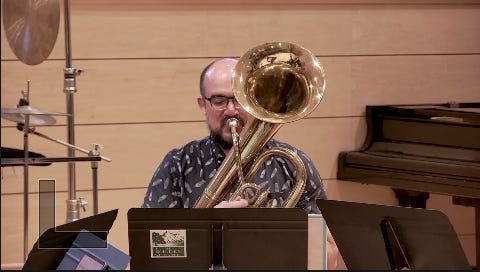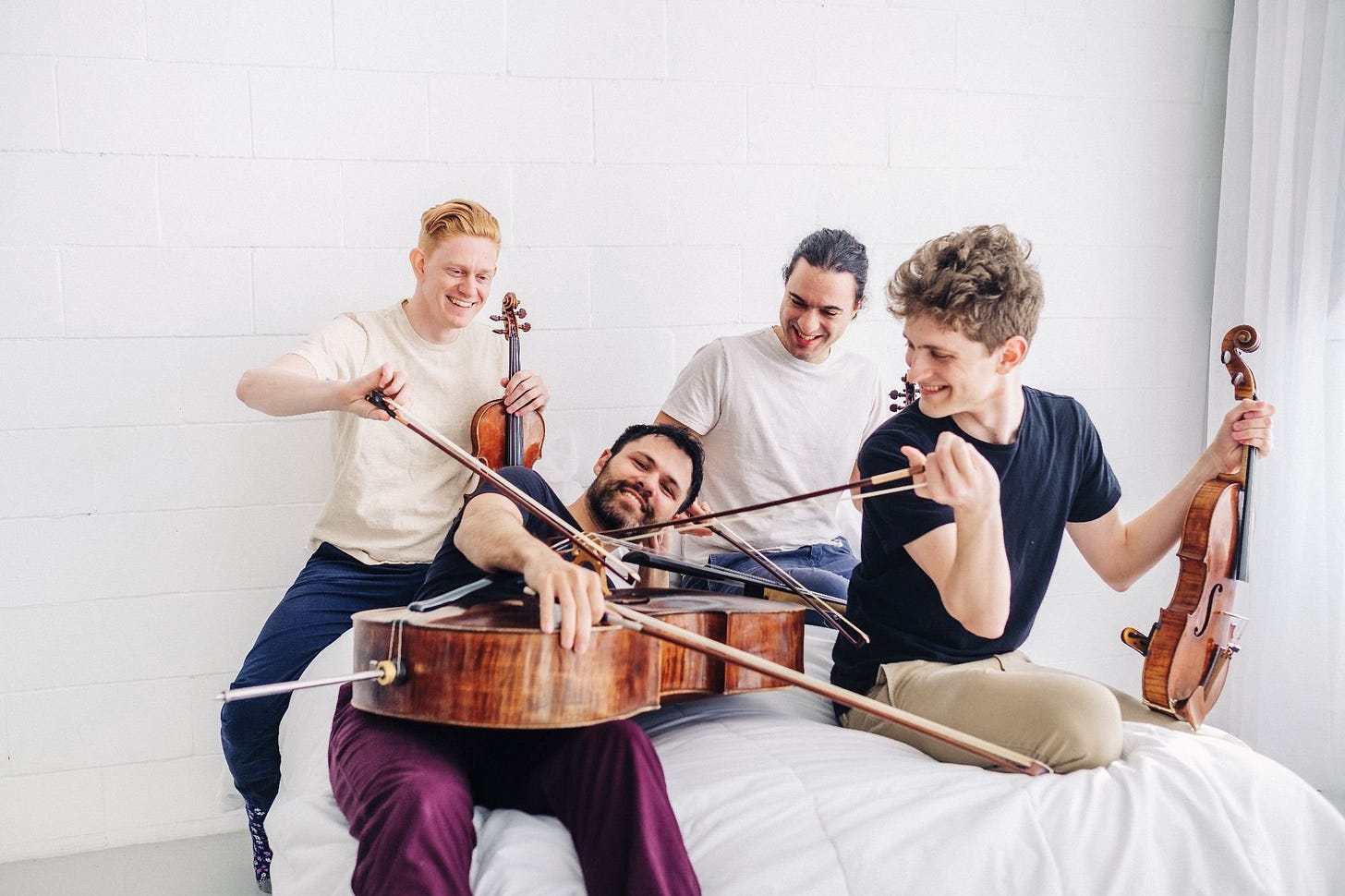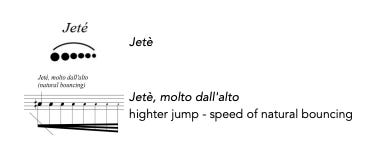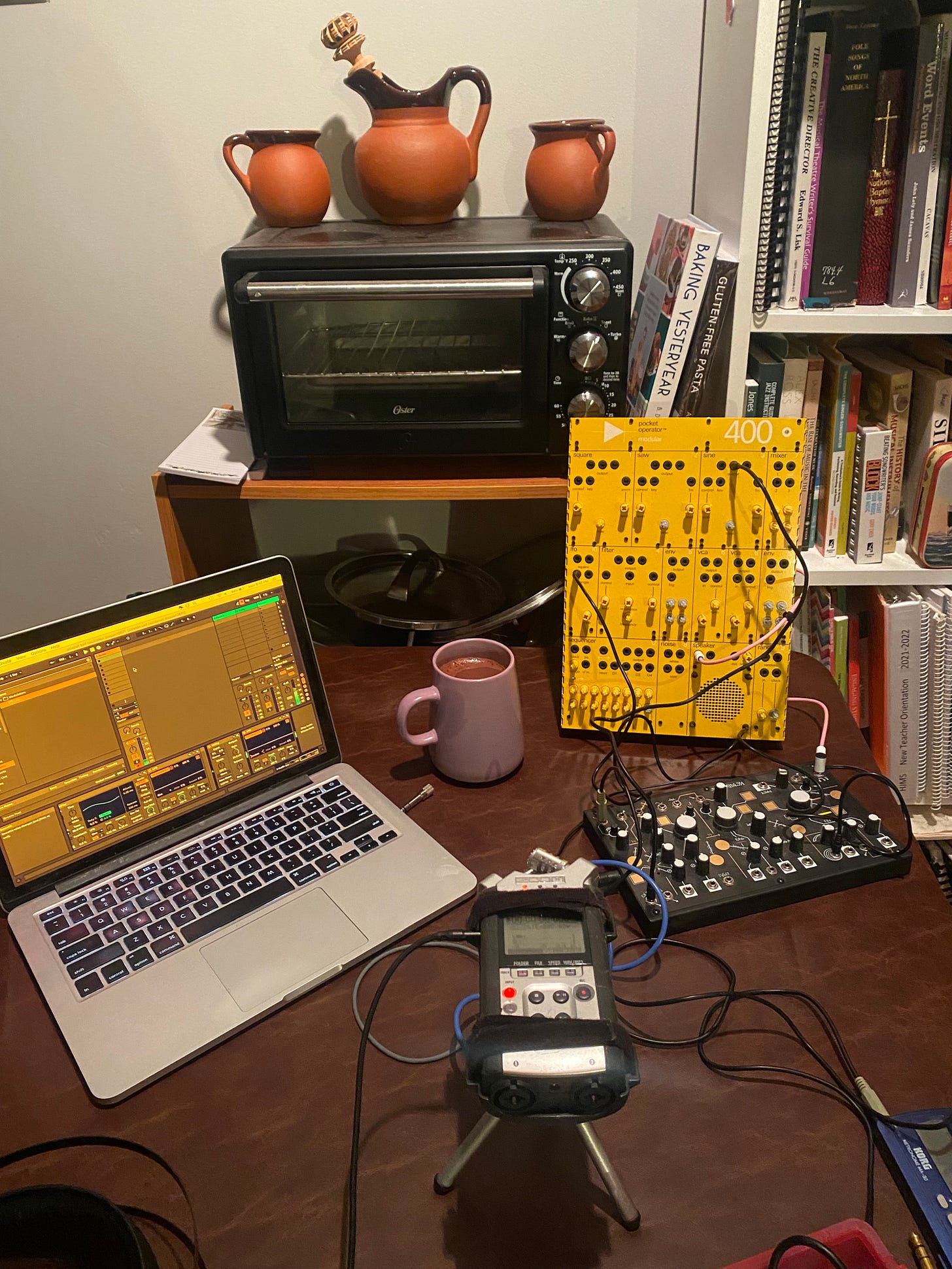Let's Get Weird!
🧐 Extended Techniques for Low Brass and Strings
Zzip, sqronks, and skreeskreeskrees. Ah, the stuff of modern music.
I am wildly in favor of zzips, sqronks, and skreeskreeskrees. Electronic music and a lot of contemporary classical music focus a lot on timbre, which is the musical way of saying the unique characteristic of sound.
(I teach my students about timbre by playing a middle C on the piano, then singing a middle C and asking them how they know which was which).
With physical instruments, we explore new timbres by using extended techniques: getting new sounds by playing instruments in unusual, unorthodox, and/or "wrong" ways.
This past summer, I had the opportunity to write a piece for a configuration of San Francisco’s Friction Quartet, thanks to The Walden School's Young Musicians Program Faculty Commissioning Project. I got to work writing a piece for 2 violins, 1 viola, and myself on baritone horn, and exploring any and all extended techniques I could find or invent.
I found the two best places to learn about extended techniques are:
1) YouTube
2) A patient and indulgent friend (thanks, Florian!)
(Of course, there are also textbooks and that sort of thing, but by the time an unorthodox method of performing is noticed, documented, codified, printed, and distributed, it has pretty much become orthodox.)
Here are the extended techniques and timbres that made their way into my piece, "O! To Join the Labyrinth King!"
Brass teeth-whistling
Make a sound as if you’re shushing somebody, then move your tongue slightly forward so you’re making a teapot sound. Then, amplify it through the horn! The pitch is wildly indeterminate and the horn adds unpredictable overtones. I used it for a melody, but I think it might be nice for an unusual accompaniment.
Strings ricochet / jeté
I didn’t invent this one, but it’s a cool one! The violinist bounces their bow on the string - I wanted it to be random and unpredictable, but players can also do it in precise rhythms, if asked.
I just found this alternate notation by Omar Dodaro, which I think is clearer; I’ll probably use it next time:
Col legno tratto
The string player turns their bow to the side and uses the wood (how cool is that!). Violinist Kevin Rogers suggested keeping a little bit of the bow in there to keep it audible.
Strings F-hole breathing
This piece is, broadly, about half-hearing melodies on the wind. It begins with a melody of indeterminate pitches “whistled” through the horn, and it ends by asking the string players to mimic the sound of the wind via sustained breaths through the f holes on their instruments.
A huge thanks to Friction Quartet for being awesome players and people!
Current noise-making:
Crafting a “sonic environment” of a toaster oven, teapot, metronomes, and laptop feedback for a recent Disquiet Junto:
Current woodshedding:
Thelonious Monk’s iconoclastic take on Caravan:
Current listening:
Woods by Nine Sparks Riots and Sebastian Ågren. Speaking of low brass, this track ensconces a singable melody in an arrangement of delightful, unpredictable twists and turns:






